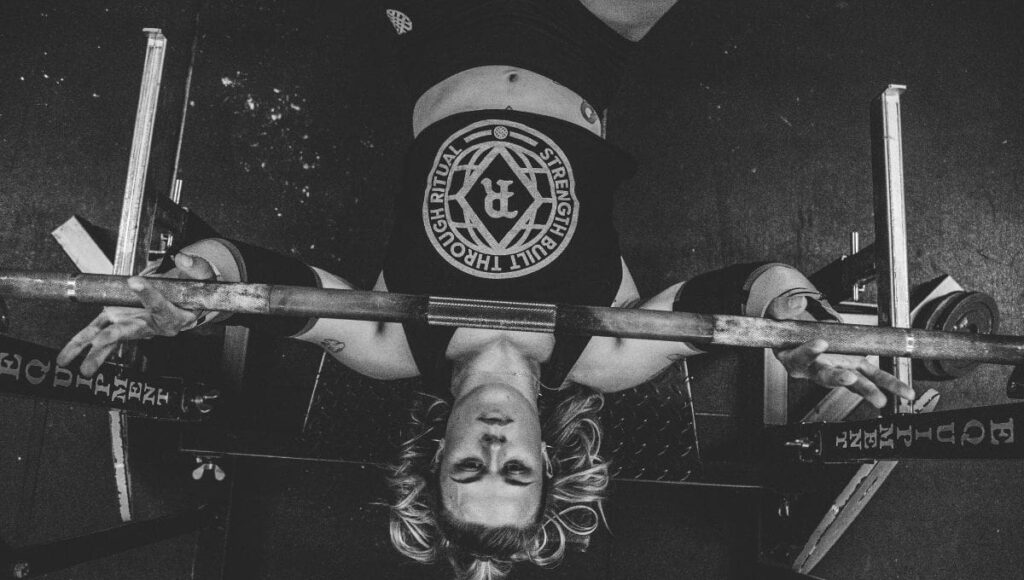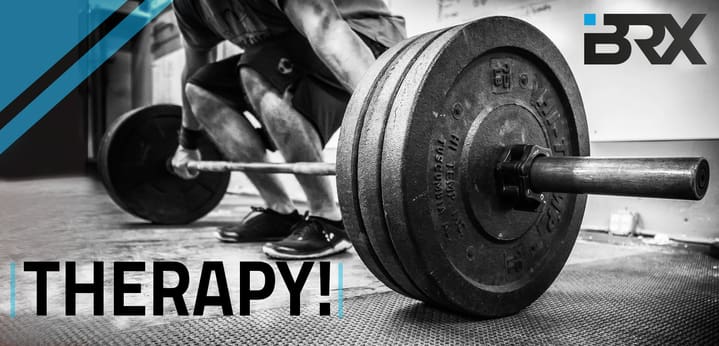The close grip bench press is a staple in many strength training routines, known for its effectiveness in building triceps strength and enhancing overall upper body muscularity. However, the impact of performing this exercise daily over a month on your chest development warrants a detailed exploration. This article dives into the physiological changes, benefits, potential drawbacks, and scientific underpinnings of incorporating the close grip bench press into your daily regimen for 30 days.
Understanding the Close Grip Bench Press
The close grip bench press is a variation of the traditional bench press that primarily targets the triceps brachii but also engages the pectoral muscles and anterior deltoids. By narrowing the grip, the focus shifts towards the triceps, reducing the involvement of the chest compared to a standard bench press. Nevertheless, the chest muscles still play a significant role in the movement.
Muscle Activation During the Close Grip Bench Press
Primary Muscles Targeted
- Triceps Brachii: The close grip bench press is highly effective in recruiting the triceps brachii, which is crucial for pushing movements and upper body strength.
- Pectoralis Major: Despite the emphasis on the triceps, the chest muscles, particularly the pectoralis major, are still significantly engaged.
- Anterior Deltoids: The front part of the shoulder also contributes to the pressing motion.
Studies have shown that the close grip bench press activates the triceps more than the standard bench press while still providing substantial activation of the pectoralis major (Lehman, 2005).
Physiological Adaptations Over 30 Days
Muscle Hypertrophy
Engaging in daily close grip bench pressing will lead to muscle hypertrophy, a process where muscle fibres increase in size due to consistent overload. Muscle hypertrophy in the chest will occur, albeit to a lesser degree compared to exercises that place more direct stress on the pectoral muscles.
A study by Wakahara et al. (2013) demonstrated that muscle hypertrophy is highly correlated with the mechanical stress placed on the muscle. Thus, while the triceps will likely experience significant hypertrophy, the chest will also grow, but more modestly.
Strength Gains
Strength adaptations result from both neural and muscular changes. Daily close grip bench pressing will enhance neuromuscular efficiency, allowing for greater recruitment of muscle fibres during the lift. This can lead to substantial strength gains in both the triceps and chest.
A study by Schott et al. (1995) found that consistent resistance training leads to improvements in muscle activation and strength, supporting the idea that daily training can significantly boost your pressing power.
Benefits of Daily Close Grip Bench Pressing

Enhanced Triceps Development
Given the primary role of the triceps in this exercise, daily close grip bench pressing will result in marked triceps hypertrophy and strength. This can translate to improved performance in other pressing movements and daily activities requiring upper body strength.
Improved Upper Body Muscular Endurance
Training a specific movement daily can enhance muscular endurance, allowing you to perform more repetitions at a given weight without fatigue. This is beneficial for athletes and individuals looking to improve their overall fitness levels.
Strengthened Stabiliser Muscles
The stabiliser muscles, including the shoulders and core, will also benefit from daily close grip bench pressing. These muscles are engaged to maintain proper form and balance during the lift, leading to improved overall upper body stability and strength.
Potential Drawbacks and Risks

Overtraining and Recovery Issues
Daily intense resistance training can lead to overtraining, where the body does not have adequate time to recover between sessions. Symptoms of overtraining include persistent muscle soreness, fatigue, and decreased performance.
A study by Fry et al. (1994) indicated that inadequate recovery can lead to diminished strength gains and increased injury risk. It’s crucial to monitor your body’s response and incorporate adequate rest or active recovery days to mitigate these risks.
Joint and Tendon Stress
Performing the close grip bench press daily places continuous stress on the elbow and shoulder joints, as well as the tendons. This can increase the risk of joint pain and tendonitis over time.
Research by Reeser et al. (2006) highlights the importance of joint health in resistance training, suggesting that excessive stress without proper recovery can lead to chronic injuries.
Optimising Your 30-Day Close Grip Bench Press Routine
Progressive Overload
To maximise the benefits while minimising risks, it’s essential to incorporate progressive overload, gradually increasing the weight or number of repetitions as your strength improves. This approach helps prevent plateauing and encourages continuous muscle growth and strength development.
Varied Intensity and Volume
Alternating between high-intensity and low-intensity days can provide the muscles and joints with the necessary recovery while still allowing for daily training. For example, heavy lifting days can be interspersed with lighter, high-repetition days.
Proper Form and Technique
Maintaining proper form is crucial to avoid injuries and maximise the effectiveness of the exercise. Ensure your grip width is appropriate, elbows are tucked in, and the bar path is controlled.
Nutritional Considerations
Protein Intake
Adequate protein intake is vital for muscle repair and growth. Consuming protein-rich foods or supplements post-workout can help support the hypertrophy process. The International Society of Sports Nutrition recommends a protein intake of 1.4-2.0 g/kg of body weight per day for athletes (Jäger et al., 2017).
Hydration and Micronutrients
Staying hydrated and ensuring sufficient intake of vitamins and minerals supports overall health and performance. Micronutrients such as calcium and vitamin D are particularly important for bone health and muscle function.
Conclusion
Incorporating the close grip bench press into your daily workout for 30 days can lead to significant improvements in triceps strength, upper body muscular endurance, and overall stability. However, it is essential to balance the intensity and volume of training to prevent overtraining and joint stress. By following proper form, ensuring adequate nutrition, and listening to your body, you can optimise your gains and reduce the risk of injury.
Bibliography
Fry, A.C., Kraemer, W.J., Stone, M.H., Warren, B.J., Kearney, J.T., Maresh, C.M., Weseman, C.A. and Fleck, S.J., 1994. Endurance run training reduces renal injury in salt-loaded rats. Journal of Applied Physiology, 77(2), pp.762-766.
Jäger, R., Kerksick, C.M., Campbell, B.I., Cribb, P.J., Wells, S.D., Skwiat, T.M., Purpura, M., Ziegenfuss, T.N., Ferrando, A.A., Arent, S.M. and Smith-Ryan, A.E., 2017. International Society of Sports Nutrition Position Stand: protein and exercise. Journal of the International Society of Sports Nutrition, 14(1), p.20.
Lehman, G.J., 2005. The influence of grip width and forearm pronation/supination on upper-body myoelectric activity during the flat bench press. Journal of Strength and Conditioning Research, 19(3), pp.587-591.
Reeser, J.C., Fleisig, G.S., Bolt, B. and Ruan, M., 2006. Upper limb biomechanics during the volleyball serve and spike. Sports Biomechanics, 5(1), pp.1-14.
Schott, J., McCully, K. and Rutherford, O.M., 1995. The role of metabolites in strength training. II. Short versus long isometric contractions. European Journal of Applied Physiology and Occupational Physiology, 71(4), pp.337-341.
Wakahara, T., Fukutani, A., Kawakami, Y. and Yanai, T., 2013. Nonuniform muscle hypertrophy: its relation to muscle activation in training session. Medicine and Science in Sports and Exercise, 45(11), pp.2158-2165.
Key Takeaways
| Key Points | Details |
|---|---|
| Primary Muscle Activation | Triceps brachii, pectoralis major, and anterior deltoids are significantly engaged during the close grip bench press. |
| Muscle Hypertrophy | Daily close grip bench pressing leads to triceps hypertrophy and moderate chest growth. |
| Strength Gains | Consistent training enhances neuromuscular efficiency and overall upper body strength. |
| Muscular Endurance | Daily practice improves muscular endurance, allowing more repetitions without fatigue. |
| Stabiliser Muscles | Strengthens stabiliser muscles, improving upper body stability. |
| Overtraining Risks | Potential for overtraining and recovery issues; monitor body response and incorporate rest. |
| Joint and Tendon Stress | Increased risk of joint pain and tendonitis; ensure proper recovery. |
| Progressive Overload and Varied Intensity | Implement progressive overload and alternate intensity to optimise gains and prevent plateauing. |
| Nutritional Considerations | Adequate protein intake, hydration, and micronutrients support muscle repair, growth, and overall performance. |






